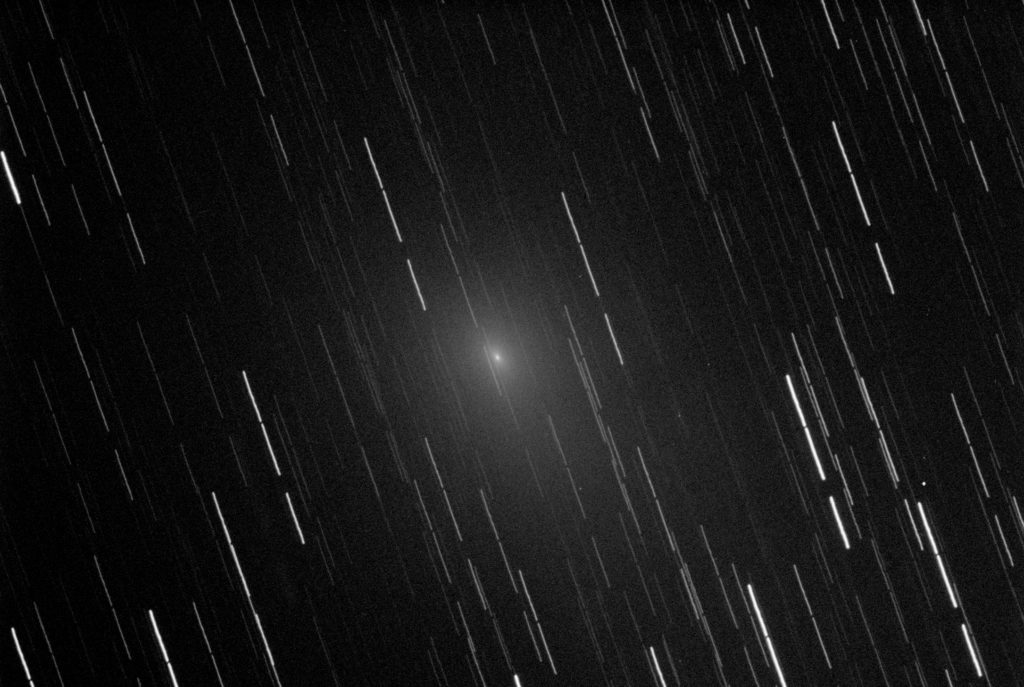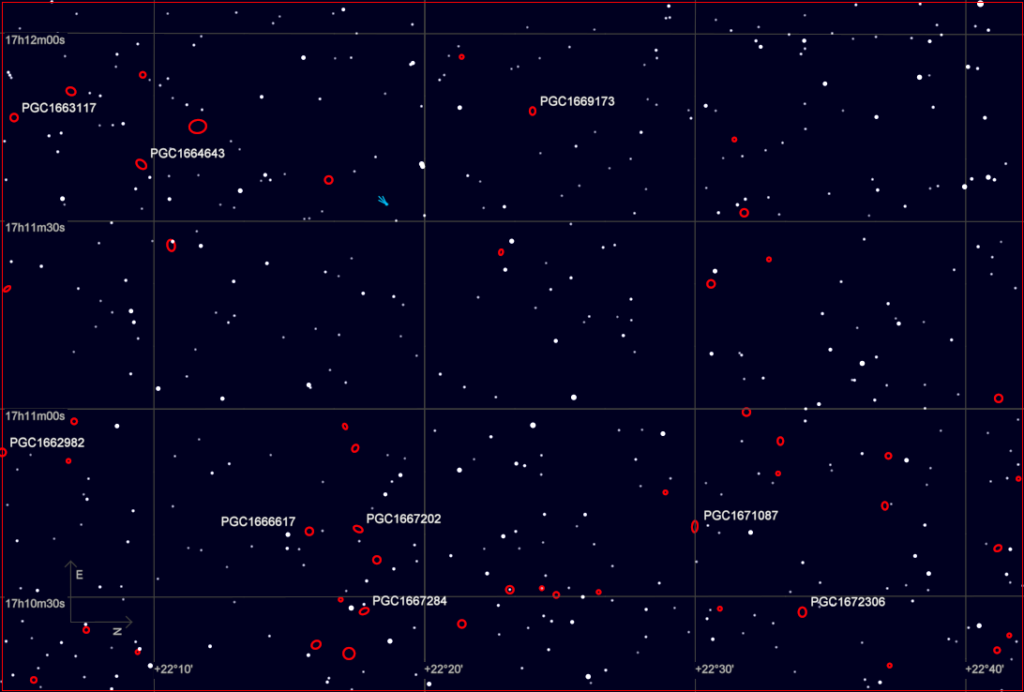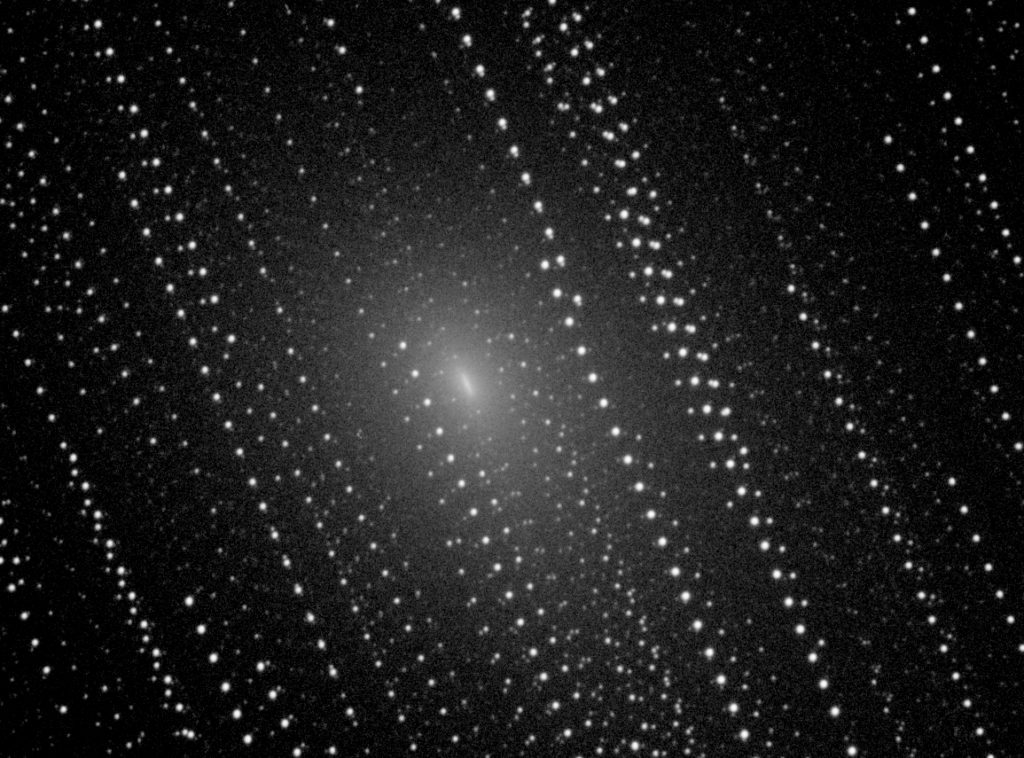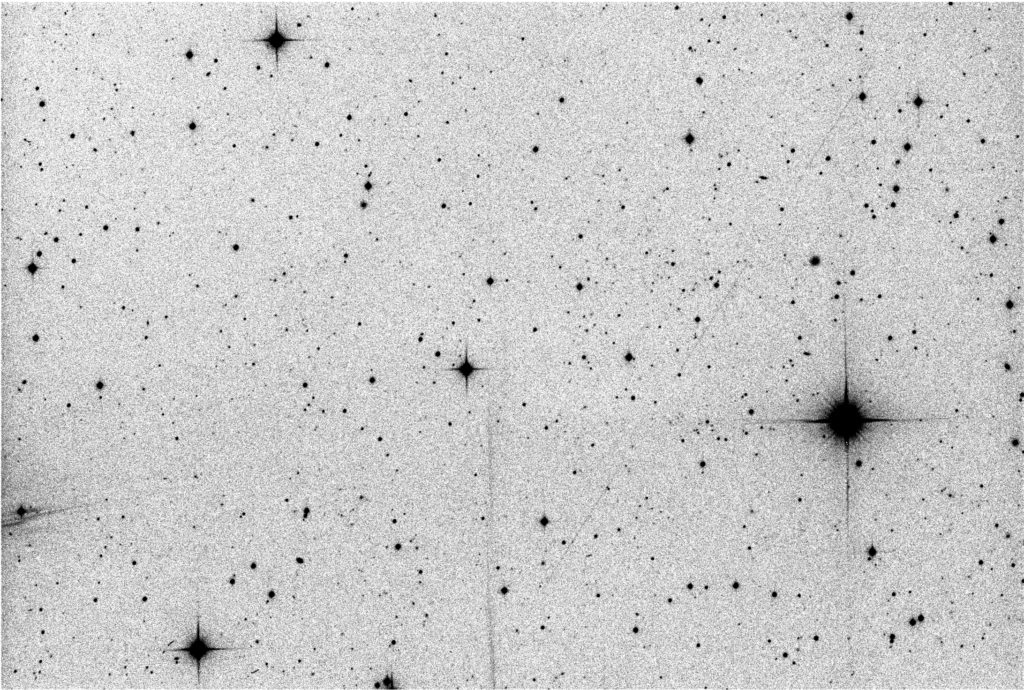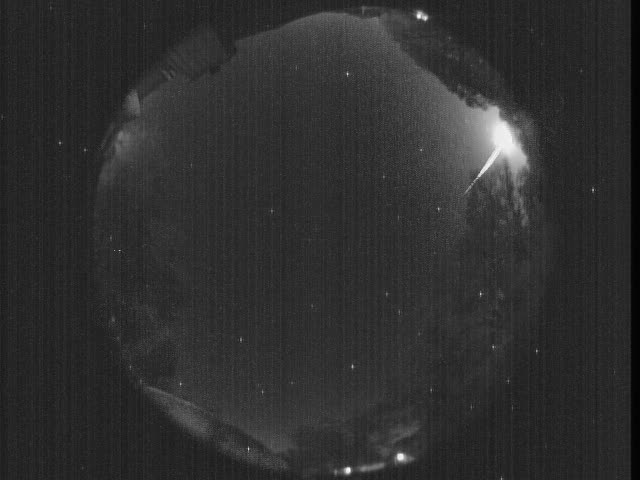
A quick check of the SkySentinel camera detections on Saturday night (the 18th) showed this bolide well to the west of the PTO. I checked the American Meteor Society web page the next morning and the fireball log showed an event (AMS 688-2017) at the approximate time with a list of 70+ reported observations. I am still working on posting my detections on the AMS video page, but am having problems. I think the problem is with the format of the videos created by the SkySentinel application.
Comet 45P’s motion over one day brought it above my treeline about an hour earlier than Thursday night. Unfortunately, the Moon’s daily motion brought it higher in the sky and closer to the comet. These combined to lessen the amount of time I could image the comet.
Thursday night the mount was tracking at the sidereal rate. This is the rate the Earth rotates using the stars as the reference. This is why the stars are round after a timed exposure.
An object’s orbit in the solar system can be accurately modeled by 6 numerical values known as orbital elements. Once enough observations of a solar system object are taken, those 6 values can be derived. The Minor Planet Center (MPC) publishes the orbital elements once they are calculated. In this case we are discussing comet 45P and depending on where the comet is in its orbit, the gravitational effects of other objects (say Jupiter or the Earth) can change its orbit and, as a result, the calculated orbital elements. These values can change fairly quickly. My first pointing attempt Friday night left me with an empty image of stars. With the comet nearing the Earth, the orbital elements from Thursday night were no longer accurate and I had to download Friday’s values.
By using the orbital elements published Friday I was able to change the rate and direction the mount moved to match the orbit of the comet. But since the mount is now matching the comet’s movement and not the Earth’s rotation, the stars get streaked. This is why the comet looks natural even though the exposures were 300 seconds long. The image is a stack of three 300 second images.
I stayed up a little later (earlier?) than usual to see if the skies would still be dark enough to get some images of comet Honda-Mrkos-Pajdusakova (45P). Yesterday the comet rose above the eastern horizon just after 1 AM. Unfortunately, my eastern tree line has an elevation of 53° and the comet didn’t clear the trees until 5 AM, leaving just 35 minutes of dark sky. So, after taking pointing and test exposures, I was able to get twenty 60 second exposures before the PTO sky meter measured the sky starting to brighten.
Predictions made last December forecast the comet to be naked eye visible after perihelion on the 31st. But once it passed the Sun and started its outbound trip the comet did not meet the forecasts; not even close. The most obvious difference is the complete lack of a tail. Pre-perihelion photos show a small tight coma with a long thin tail. One current theory is the comet came close enough to the Sun to sublimate most of the surface volatile material leaving just enough to form the now large diffuse coma.
It is obvious from the above image how fast the comet is moving. The image shows only 60 seconds of motion yet the comet is badly streaked. The comet is currently traveling about 51,000 mph, but the apparent motion is primarily due to how close it is to the Earth, and right now the comet is quickly getting closer. The comet will pass perigee tomorrow morning (the 11th) at 2 AM (CST) at only 7.7 million miles.
The fact that the comet is so diffuse is what is preventing naked eye visibility and makes it a difficult binocular target as well. The approaching Moon is not going to make seeing the comet any easier for the next several days.
On the second of February a small asteroid buzzed the Earth. Discovered only three days earlier by the PanSTARRS 1 telescope in Hawaii, the rock missed us by less than half the distance to the Moon. The most recent estimates of its size are in the range of 11-25m making it roughly the size of the asteroid that entered the atmosphere over the Russian city of Chelyabinsk on the 15th of Feb 2013.
This image is a stack of three 300 second images taken on the evening prior to the object’s closest approach. The asteroid is seen as three distinct faint streaks starting in the top right and traveling down to the bottom center. Clicking on the image will provide a larger view where the streaks will be a little easier to see.
The wispy vertical artifact at lower center is either the remains of an aircraft contrail or a meteor train. I capture these every so often. Animating several of these exposures shows a slow drift indicating it is atmospheric in nature.
